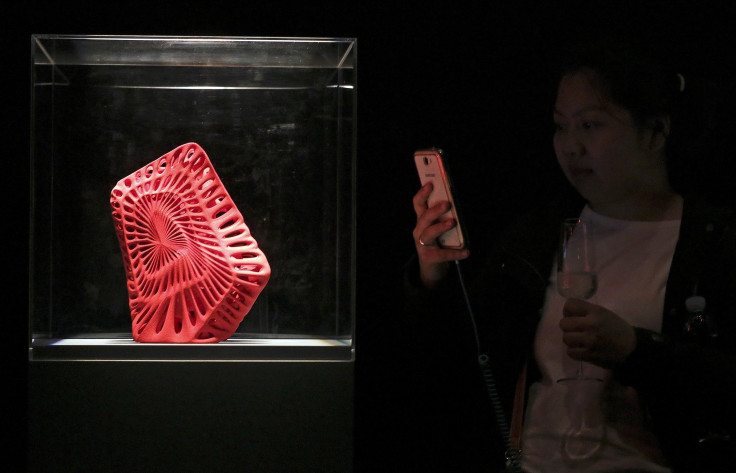World’s First Photosynthetic Living Matter-Infused 3D-Printed Wearable Showcased At 2015 TED Conference in Vancouver

The world’s first 3D printed photosynthetic wearable, embedded with living matter, was unveiled at the 2015 TED Conference in, Canada. The well-known Israeli designer and architect, Neri Oxman, revealed Mushtari, an artwork 3D printed by Stratasys. The word “Mushtari” is derived from an Arabic word for giant and is used as a reference for the planet Jupiter. The creation is a part of a series of pieces by Oxman in a series called Wanderers: An Astrobiological Exploration.
The ensemble is a vivid fusion of art and science which exhibits a symbiotic association between the two. It allows the living organisms like cyanobacteria and E.coli to inhabit along with manipulating their functions.
Oxman explained her creation by saying, “We live in a special time. This is the first time that 3D printing technology has been used to produce a photosynthetic wearable piece with hollow internal channels designed to house microorganisms. Inspired by the human gastrointestinal tract, Mushtari is designed to host synthetic microorganisms, a col-culture of photosynthetic cyanobacteria and E. coli bacteria that can fluoresce bright colors in darkness and produce sugar or biofuels when exposed to the sun. Such functions will in the near future augment the wearer by scanning our skins, repairing damaged tissue and sustaining our bodies, an experiment that has never been attempted before.”
With the help of Strarasys’ unique triple-jetting 3D printing technology, Oxman and her team were able to create a large fluid network within Mushtari that varied in transparency from opaque to clear. This enabled the designers to achieve varying levels of transparency and translucency into surface areas of the wearable where photosynthesis was desired. To this, Oxman adds, “Channels and pockets were implemented to enhance the flow and functionality of the cells - such mechanical and optical property gradation can only be achieved using multi-material 3D printing with high spatial resolution for manufacturing."
Naomi Kaempfer, the creative director for Art, Fashion and Design at Stratasys, opined that the collaboration with Professor Neri Oxman has been very fruitful with great reciprocal benefits as they pushed each other to the edges of expression and technological capability.
Oxman concludes that the incorporation of synthetic biology in 3D printed products for wearable microbiomes will allow for transition to take place from designs that are inspired by the nature, to the designs made with nature, to possibly designing nature herself.
To contact the writer, email:ruchira.dhoke@gmail.com





















